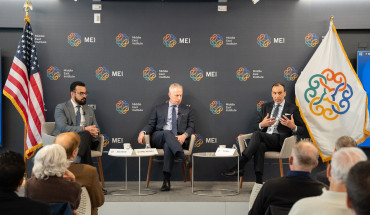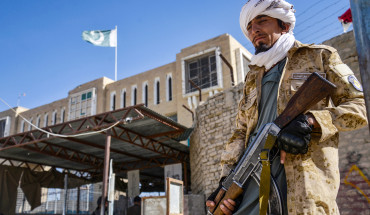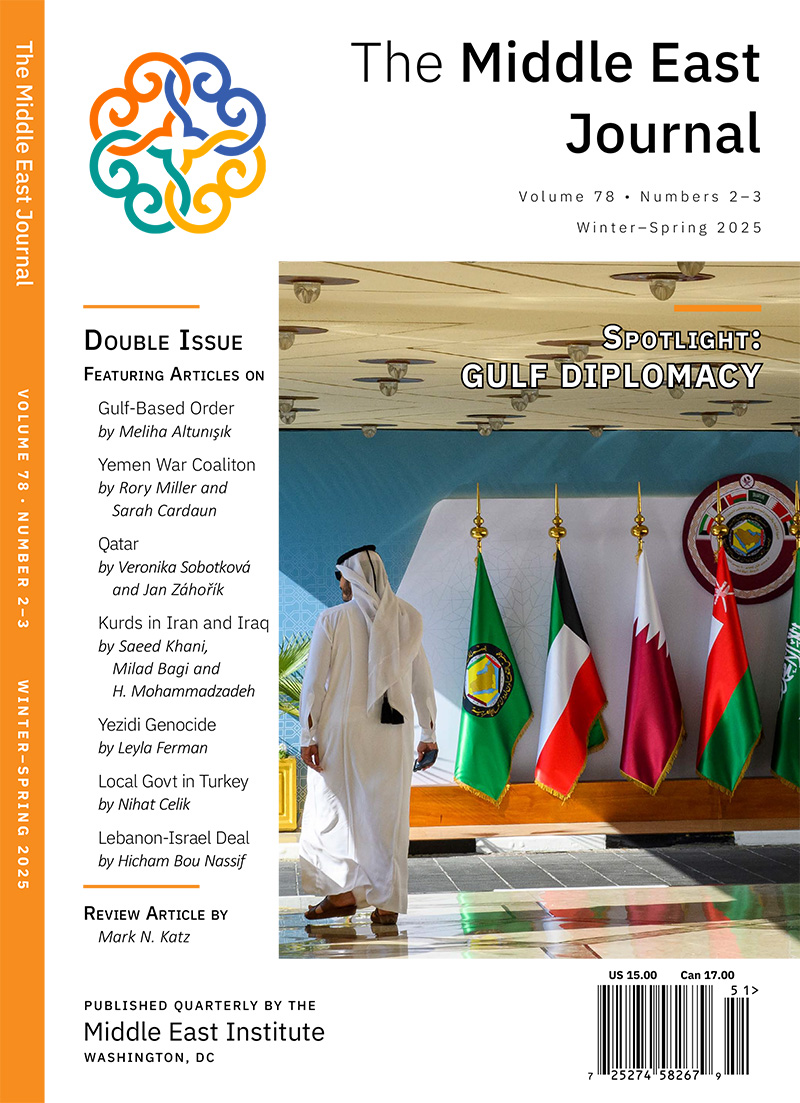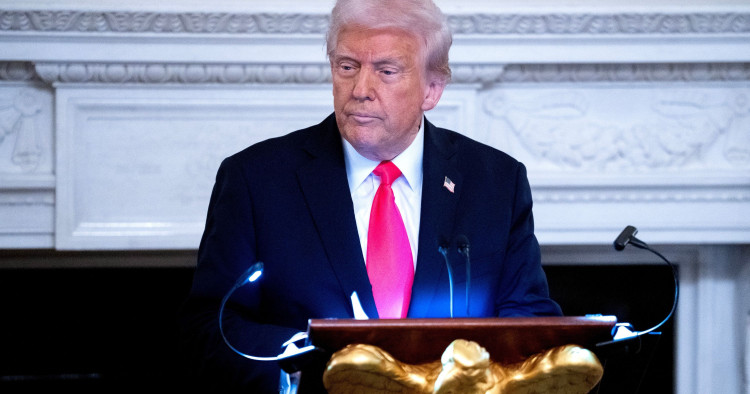The first 60 days of President Donald Trump’s second term upended domestic politics and policy in the United States as well as dramatically scrambled US relations with allies and foes in the Americas, Europe, and Asia. But in the Middle East, overall American goals have not fundamentally changed.
Thus, in its broad outlines, Trump’s Middle East policy is not too divergent from what Joe Biden’s had been. Their shared facets include a strong commitment to Israel’s security along with a desire to bring its recent conflicts in Gaza and Lebanon to an end; a prioritization of a tripartite deal between the US, Saudi Arabia, and Israel that features Saudi-Israeli normalization but would require some concessions from Israel to the Palestinians; a high valuation of US economic and technological relations with the countries of the Gulf Cooperation Council (GCC) as an end in itself as well as a way to contain China; and a strong desire to reach a negotiated deal with Iran.
What emerges from this demonstrated list of objectives and his administration’s policy steps to date is that Trump is focused on realizing two transformative and valuable breakthroughs that his predecessors failed to accomplish: an end to the Arab-Israeli conflict, centered on a tripartite US-Saudi-Israeli deal that would include Saudi-Israeli normalization, and an agreement between the US and Iran. Both would be historical achievements. So far, however, progress in each case has proven difficult and plodding.
The first months
Donald Trump had a marked effect on Middle Eastern dynamics even before he took office. Weeks after he was elected in early November, Israel and Lebanon signed a US-brokered cease-fire deal to halt 15 months of fighting between Israeli and Hizballah forces. And just days before he took office on Jan. 20, Israel and Hamas agreed to a cease-fire and hostage/prisoner exchange in Gaza. In both cases, Trump’s rhetoric and surrogates were reportedly instrumental in clinching these diplomatic successes.
Trump had made ending wars — and not starting new ones — a cornerstone of his campaign, and it seemed that this promise was bearing fruit. Yet now, more than two months into his second term, the cease-fire in Gaza has largely broken down, and Israel has returned to fairly large-scale military activity; the cease-fire in Lebanon has not been fully implemented, and a flare up of fighting last week — including rockets into Israel and an Israeli attack on Beirut — threatened to bring that cessation of hostilities crashing down as well. As of last week, the US is itself engaged in a stepped-up military conflict with the Houthis, having expanded its airstrike campaign against the group in Yemen. And on Sunday, Trump threatened war on Iran if it did not agree to a deal with the US (although he did not make clear if the war would be an Israeli one, American, or both). In other words, the clouds of war are once again overshadowing hopes for peace.
Israel-Palestine
Indeed, as of April 1, the Trump administration has not been able to get far off the starting block on just about any key issue in the Middle East. In Gaza, the US is again mired in negotiations with Hamas — via Qatari and Egyptian mediators — to release remaining hostages, establish a lasting cease-fire, and figure out a postwar arrangement for the devastated coastal territory. In the West Bank, the situation continues to deteriorate dangerously.
With an eye toward the grand prize of Saudi-Israeli normalization, the Trump administration has not yet made clear what it may offer the Palestinians that Israel would agree with and the Saudis could sign on to. Troublingly, in a recent interview, US special envoy Steve Witkoff talked repeatedly about the potential for Saudi-Israeli normalization but only mentioned arrangements in Gaza as relevant to that discussion; he conspicuously said nothing about any arrangements regarding the West Bank. Was that just a random omission or an indication of White House policy? It is doubtful that Riyadh would move forward on normalization if the only Israeli concessions pertain to Gaza; some concession on the West Bank would also have to be part of the deal.
The way forward in Lebanon
In Lebanon, the US-brokered cease-fire agreement is holding a bit better than in Gaza, but it appears shaky there as well. Israel has maintained a military presence in five points inside Lebanon — which has only fed into Hizballah’s narrative — and it continues to attack Hizballah targets in the country at will. Last week’s flare up, including the first Israeli air attack on Beirut since the cease-fire, warned of the possibility of a wider breakdown; Israel carried out another such strike on the capital yesterday. On the other hand, Hizballah has largely gone along with its evacuation of positions south of the Litani River, the breadth and intensity of Israeli attacks has declined dramatically compared to before the cease-fire, and over a million Lebanese displaced have come back to their towns and neighborhoods in the south, Beirut, and the Bekaa Valley. The return of Israelis to their towns in northern Israel has been markedly more limited.
The coming challenge vis-à-vis Lebanon is to ensure the cease-fire agreement links to broader United Nations resolutions that demand the full disarmament of Hizballah and any other non-state armed groups. While agreeing to withdraw from south of the Litani, Hizballah has so far refused to consider giving up its weapons north of the river to the Lebanese state. This standoff could degenerate into serious internal political and security troubles in Lebanon or potentially escalate into a resumption of full-scale Israeli war on Hizballah — or both.
Back to the future in Yemen
In Yemen, the Trump administration is also employing more or less the same playbook as the Biden administration — ordering direct US military strikes in an attempt to force the Houthis to stop their attacks in the Red Sea and on Israel. Like before, the strikes may degrade Houthi capacities; but so far at least, they have neither deterred the group’s additional Red Sea attacks nor missile volleys against Israel.
Dealing with Iran
As both the Biden and Trump administrations have accurately surmised, Iran is a linchpin in many of the conflicts the US is dealing with in the region. And indeed, President Trump has made bold moves toward Iran, resuming the “maximum pressure” campaign and threatening “bombing the likes of which they have never seen before,” while also sending a letter to the supreme leader urging negotiations and a peaceful resolution of differences. Trump is clearly ready for a transformative deal; it is not clear that the supreme leader is. Indeed, Iran announced over the weekend that it rejects direct talks but is open to indirect ones.
On the one hand, Iran can be said to be under intense pressure: it has lost access to Syria; its crown jewel, Hizballah, has been greatly weakened; its Houthi allies are under attack; and Hamas is largely decimated. In addition, Iran’s economy is weak and under mounting strain and Iran itself is vulnerable to direct attack.
On the other hand, Iranian hardliners might see things in a different light. After 18 months of war with Israel — and, in their assessment, with the US as well — the Iran-led Axis of Resistance has been battered but survives. Even Hamas has persevered despite months of direct Israeli attacks; as have Hizballah, the Houthis, and the Iraqi Hashd al-Shaabi (Popular Mobilization Forces, or PMF). So far, Iran has suffered a full loss in Syria, but even there it is looking for ways to reverse its fortunes. Tehran is banking on — and investing in — the failure of the new leadership in Damascus to bring unity and stability to Syria, figuring that continued or increased fragmentation of the country will allow Iran a pathway back in. The events on the Syrian coast in mid-March indicate that the Iranians might not be far off the mark. It is particularly troubling that both Iran and Israel seem to be committed— and contributing — to a failure of the Syrian state.
And looking at the security ledger for the Middle East’s two main rivals, Israel and Iran, over the last 18 months, the conclusion is not so obvious. Yes, Iran is now vulnerable to Israeli and American attack. But on Oct. 7, 2023, Israel suffered the largest single-day loss of life in its modern history and, since then, has been engaged in effectively a non-stop, full-mobilization war. Meanwhile, Iran itself has been comparably safer and less overstretched. It endured a couple of targeted strikes on its air defenses and the destruction of a missile-fuel plant and a nuclear research facility in April and October of last year — which were definitely significant attacks and pointedly exposed the country’s vulnerabilities. Nonetheless, Iran and Iranians have suffered nothing near the traumatic and extended distress that Israel and Israelis have been experiencing for the past 18 months.
The inverse effect of attacking Iran’s proxy allies
Although the defanging of Iran’s missile force and the degrading of its militia allies, especially Hizballah, have virtually eliminated Iranian deterrence against Israeli attack, Israel’s — and in some cases, America’s — ongoing wars with Iranian proxies actually reinforce Tehran’s commitment to the Axis of Resistance. Every attack on a militia ally is resources and energy spent by Iran’s foes on targets other than Iran itself; and this validates the Iranian strategy of arming proxy forces as buffers and “crumple zones” to absorb Israeli and American attacks. The more Iran can keep its foes busy and distracted fighting its Arab militia allies, the more it can hope to keep itself above the fray.
Meaningful talks or just going through the motions?
Of course, Trump is trying to call Tehran on this strategy by threatening direct military action if the Iranians do not come to the negotiating table with major concessions. But Tehran also knows that while it does not have effective military defenses against direct Israeli or American attacks, it could hit and disrupt oil and natural gas production and transport in the Gulf, which Trump surely would want to avoid lest such strikes trigger a global energy and economic crisis. Both sides have each other over a barrel, so to speak.
It is likely that the hardliners in Iran would rather hunker down in their familiar bunker — one that now includes Russia and China as allies — and play the long game, hoping to elude an actual war and outlast the terms of both Trump and Israeli Prime Minister Benjamin Netanyahu. As things stand now — facing “only” economic sanctions and attacks on Iran’s Arab militia allies — Tehran is not under such intense pressure that the supreme leader and the hardliners feel they have to offer major or transformative concessions. They might be incentivized to engage in talks but only entertain limited concessions on the nuclear file, not too far from what they ostensibly renounced in 2015. In addition, their confidence in negotiating with President Trump — who abrogated the last agreement they had with the US — is low. Of course, that calculus might change if the situation shifts quickly toward major direct attacks on Iran itself.
The economic centrality of the GCC
Conflicts aside, what is central to the Trump’s administration view of the region is the importance of Saudi Arabia and the GCC countries as major economic — and increasingly technological — partners. In describing the tremendous progress being made in the Saudi kingdom and the rest of the GCC, US envoy Steve Witkoff argued that these developments, in the context of Arab-Israeli normalization and a more integrated Middle East, could make the region “much bigger than Europe” in terms of its importance for the United States.
Conclusion
Since coming to power a little over two months ago, the Trump administration’s policies have not yet had a transformative effect on the intractable conflicts and suspended crises of the Middle East — but these are still early days. Two key questions await an answer from the administration.
First, what is the US plan for the “day after” in Gaza and the West Bank, and will there be enough in it for the Saudis to assent to normalization with Israel? If the answer to that question ends up being positive, then the region will be truly on the brink of a major positive transformation, with other Arab and Muslim countries normalizing with Israel in the context of acceptable arrangements for the Palestinian people and pressure from Saudi Arabia to follow suit.
The second question is how the Trump administration will get to a transformative deal with Iran. Such a deal would also have profound positive consequences for the Middle East. But as things stand now, what is more likely is more of the same — no major war but no major diplomatic breakthrough either.
Trump prides himself on being the ultimate dealmaker. He is correct in prioritizing a resolution to the Arab-Israeli conflict and an agreement that would end decades of US-Iranian hostility. Both deals are long overdue. So far, it’s been hard going, but there is plenty of time in the months ahead for Trump to move these two goals forward.
Paul Salem is MEI’s Vice President for International Engagement.
Photographer: Chris Kleponis/CNP/Bloomberg via Getty Images
The Middle East Institute (MEI) is an independent, non-partisan, non-for-profit, educational organization. It does not engage in advocacy and its scholars’ opinions are their own. MEI welcomes financial donations, but retains sole editorial control over its work and its publications reflect only the authors’ views. For a listing of MEI donors, please click here.













